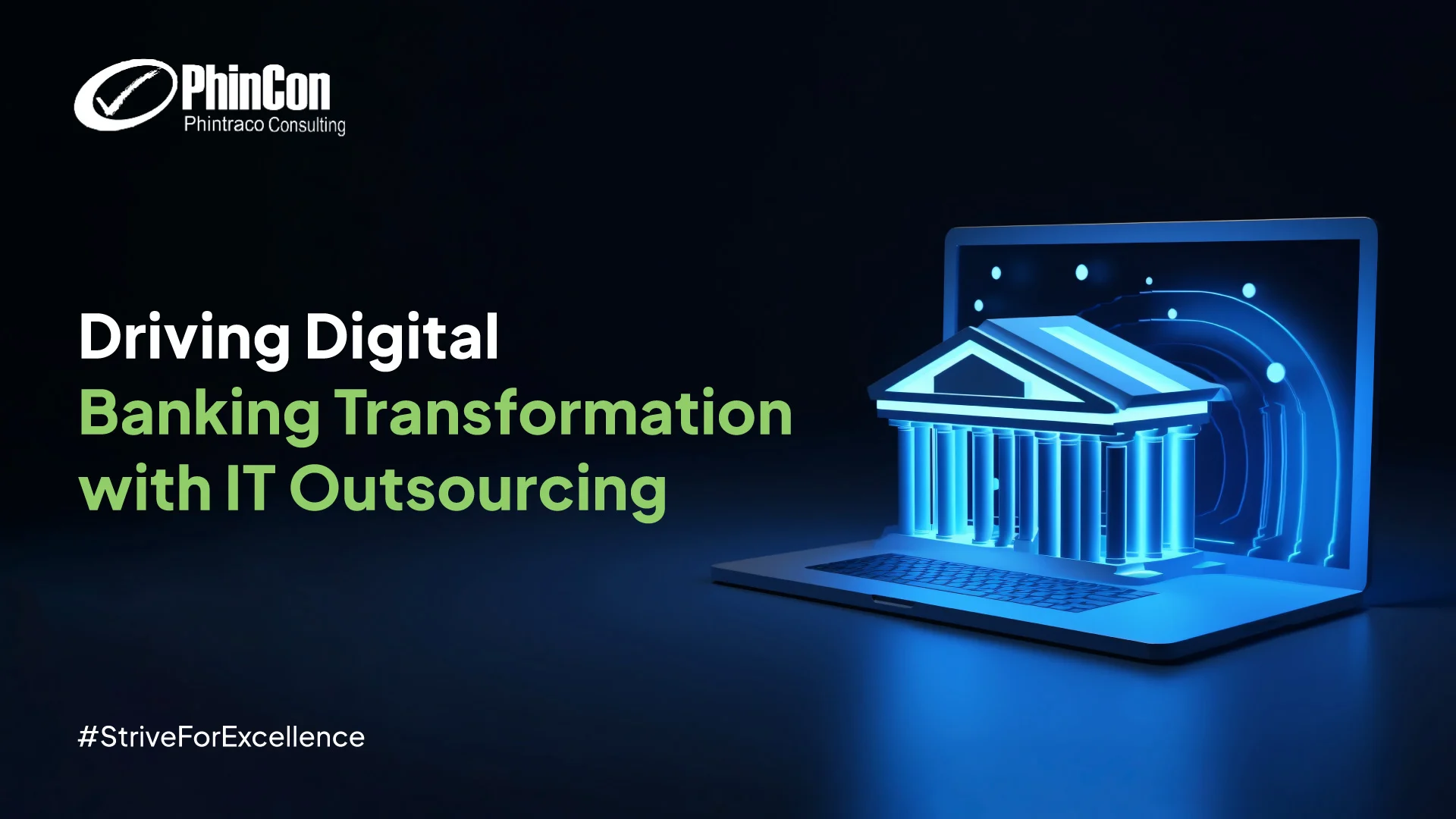Blog and News

Digital Banking Transformation: The Future of Financial Services
Digital banking transformation has revolutionized our everyday financial interactions, making services more efficient and accessible. Consider the ease of mobile check deposits, eliminating bank visits. Real-time payment systems are making sending money as simple as sending a text. Even loan applications can now be completed digitally in minutes thanks to automated underwriting and approval processes. These examples illustrate how digital transformation has enhanced convenience and efficiency.
Let’s delve deeper into digital banking transformation and how banks can implement this strategy.
What is Digital Transformation in Banking?
Digital transformation in the banking industry involves integrating digital technologies and strategies to optimize a bank’s operations and personalize customer experience. The main areas of digital transformation in banking include customer engagement, operational efficiency, compliance and risk management, and product innovation.
To meet evolving demands, banks must embrace digital transformation. Customers now expect seamless, personalized banking through digital channels, eliminating long queues and enabling convenient smartphone access. From online payments to bill settlements, they seek a full range of financial services tailored to their needs.
What are the Core Technologies Powering Digital Transformation in Banking?
Banks should utilize the latest digital technologies to implement a successful digital transformation. Here are some of the most common existing technologies in the banking and financial services industry:
Application Programming Interfaces (API)
An API is a software interface that allows two or more software applications to communicate by facilitating the data exchange, features, and functionalities. In the banking industry, this technology enables communication and data exchange between different banking applications and systems, playing a crucial role in creating connections between diverse banking applications like online banking, mobile banking, digital wallets, etc.
Cloud Computing
Cloud computing is a modern technology used by many sectors, including banking and finance. It offers scalable and flexible IT resources, allowing banks to enhance their infrastructure, improve data storage, and ensure data recovery. Cloud computing also enables banks to develop efficient solutions featuring applications and infrastructures that enhance their operational efficiency.
Internet of Things
The Internet of Things (IoT) allows banks to gather and analyze data from multiple touchpoints, such as social media or application platforms, offering insights into customer behavior and preferences. IoT enables actions such as biometric sensor-based authorization, asset tracking and monitoring, delivery of location-based services, and contactless payments. This data-driven technology helps banks offer tailored services and improve operational efficiency.
What are The Benefits and Challenges of Digital Transformation in Banking?
Digital transformation in banking has become a pressing and strategic move for many banks looking to enhance their overall service efficiency and quality. Some of the benefits and challenges offered by digital banking transformation are:
Benefits of Digital Transformation in Banking
- Enhanced Customer Experience: Digital transformation allows banks to create seamless and personalized experiences, allowing customers to access banking services anytime and anywhere. Customers expect fast, convenient, and smooth banking experiences, with online and mobile banking becoming the standard.
- Improved Operational Efficiency: Digitalization makes banking operational tasks easier and more efficient by automating routine tasks and streamlining processes. This leads to cost and time savings and allows resources to be allocated more effectively.
- Enhanced Security: Banking is one of the most risky industries with sensitive financial data, so security has become critical. Digital transformation helps improve the security of banking operations, detect and prevent fraud, and ensure data integrity.
Challenges of Digital Transformation in Banking
- Security Concerns: As banks move to digital platforms, they become attractive targets for cybercriminals. Ensuring the security of sensitive financial data is essential, and the investment in robust security measures can strain resources.
- Lack of Resources and Skill: Many banks identify the lack of expertise or insufficient training as the top hurdle to digital banking transformation. Banks must plan digital transformation carefully, such as by partnering with IT outsourcing companies to access new technology and skilled professionals to achieve digital transformation.
- Legacy Systems: Many banks rely on outdated systems and infrastructure, which can hinder the creation of agile digital platforms. Integrating new technologies with existing systems can be time-consuming and expensive.
How to Implement Digital Transformation in Banking?
Implementing digital transformation requires thorough planning to ensure its success. Here are the strategies to implement digital transformation in the banking industry:
Assessment and Strategy Development
To achieve digital banking transformation, banks must first evaluate existing systems and processes, identifying areas for improvement. This involves determining what works and what doesn’t, setting clear transformation goals (e.g., improved customer service, streamlined processes), and creating a roadmap with key milestones and timelines.
Technology Selection and Implementation
Successful digital transformation in the bank industry depends on choosing the right technology. Banks should identify technologies aligned with their goals (e.g., mobile banking apps, customer service platforms, AI chatbots) and research suitable providers within their budget. IT outsourcing solution can be considered if in-house development is infeasible due to a lack of resources or skills. Banks should pilot-test new technologies before full implementation to ensure proper functionality.
Optimize Bank’s Operations
The next step is optimizing the bank’s operations. This includes streamlining workflows by automating repetitive tasks with robotic process automation (RPA) tools, eliminating bottlenecks by identifying obstacles slowing operations, and regularly refining processes to keep them up-to-date.
Customer Journey Mapping
Customer journey mapping involves analyzing all customer interaction touchpoints (e.g., online banking, branches, ATMs) to understand and improve their experience. This analysis informs the design of more seamless customer journeys.
Ensure Successful Digital Transformation With Comprehensive IT Outsourcing Solution by PhinCon
Digital banking transformation is no longer a futuristic concept but a present-day necessity. IT outsourcing is crucial for banks seeking successful transformation, offering access to specialized skills, cost optimization, and accelerated innovation.
This strategic partnership is even more vital for Singaporean banks looking to expand their operations into the Indonesian market. PhinCon, a leading IT outsourcing provider in Indonesia, offers comprehensive IT outsourcing solutions to support Singaporean companies in broadening their market reach in Indonesia.
PhinCon provides tailored IT outsourcing to address international expansion challenges. Its extensive network grants access to a pool of talented Indonesian IT professionals and BPO services, including contact centers and other customer support functions. We provide IT experts of various roles, including Android Developer, iOS Developer, Fullstack Developer, Golang Developer, Mobile Developer, Quality Assurance, DevOps, Business Analyst, Solution Architect, Project Manager, L2 Operation Support, and more. We will help you scale your operations by managing your recruitment, payroll, benefits, and tax compliance according to Indonesia’s regulations.
For more information about IT outsourcing, contact us through email at sales.sg@phincon.com.
Editor: Trie Ayu Feminin & Irnadia Fardila
Popular Posts





